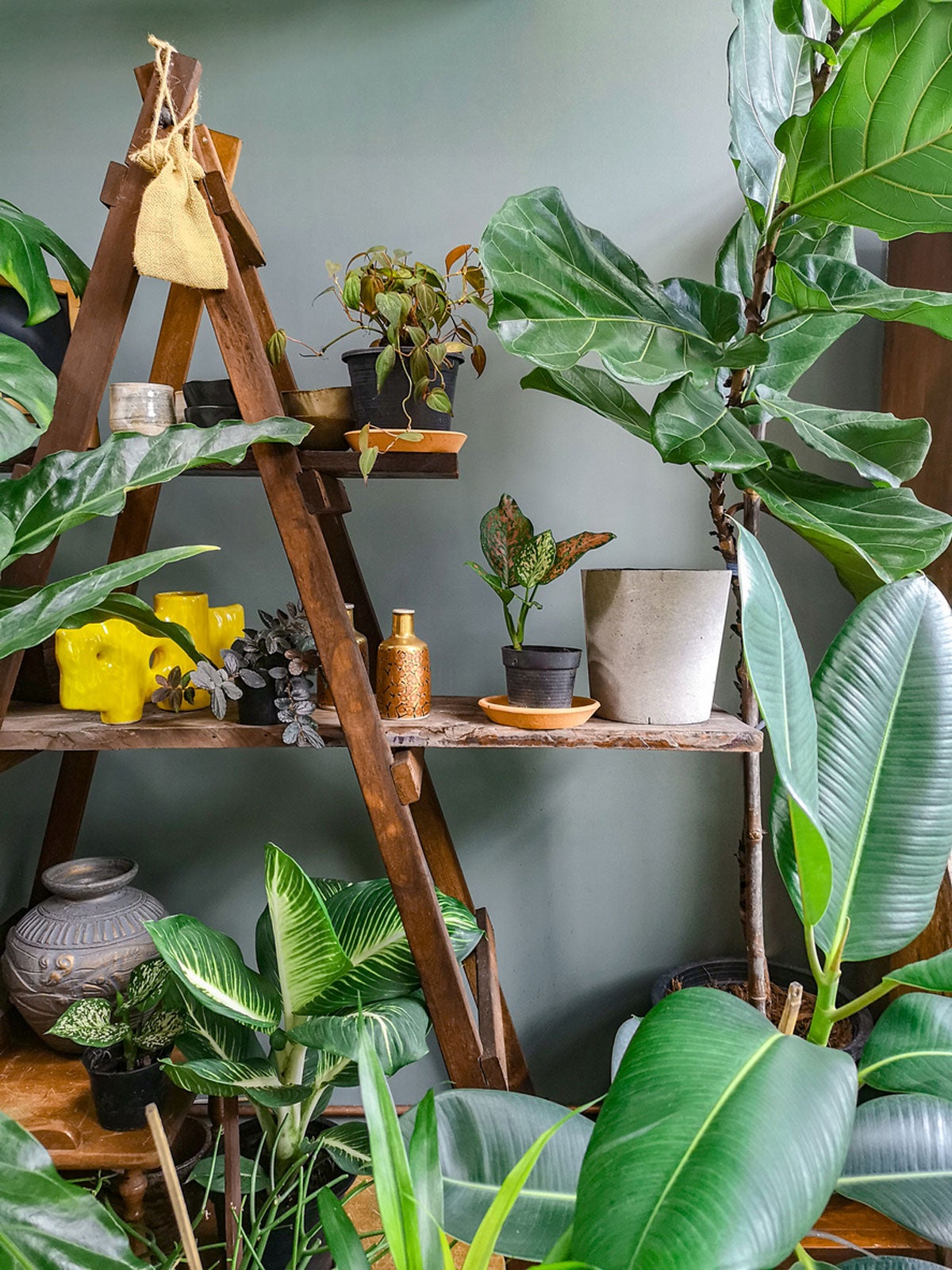Houseplant Microclimate Information: Are There Microclimates Indoors

Understanding indoor microclimates is a very important step in houseplant care. What is a houseplant microclimate? This is simply an area with various zones in our homes that have different conditions such as light, temperature, humidity, and even air circulation.
Some of us may have heard of microclimates outdoors, but you may be wondering are there microclimates indoors too? The answer is YES, so let’s discuss what this means and why it is important.
About Microclimates in Your House
When you decide where to place a certain plant, it is important that you give it the best location in your home.
Humidity
Various locations of your home can have drastically different humidity levels in the air. If you have plants that like higher humidity, such as ferns or calathea, it is important to try and increase humidity. You can create a humid microclimate simply by grouping many plants together. Plants will naturally transpire water and create a more humid microclimate for themselves.
Other options to increase humidity are to locate your plants in naturally humid areas such as bathrooms (assuming, of course, that your bathroom has enough light for your plants!) or the kitchen. You can also use a humidifier or set plants on top of humidity trays filled with pebbles and water. The water level should be below the pebbles and, as the water evaporates, it will create a humid microclimate.
Light
Light can vary greatly throughout your home. It is not enough to say that you should place a certain plant in front of a northern exposure window, for example. Not all windows are created equal. The size of the window, the season of the year, obstructions in front of a window, and other factors can vary the amount of light substantially. Use a light meter to get an idea of which locations are darker or brighter.
Temperature
Many of us set thermostats throughout the year, whether it is for air conditioning or heating. Does this mean that the entire home will be the same temperature? Absolutely not! Hot air rises, so the second floor of your home may be warmer. Situating your plants next to a heating vent may also result in a microclimate of both higher temperatures than you’d think, as well as drier air.
Gardening tips, videos, info and more delivered right to your inbox!
Sign up for the Gardening Know How newsletter today and receive a free copy of our e-book "How to Grow Delicious Tomatoes".
One good way to study the temperature in various microclimates in your home is to purchase a minimum/maximum thermometer. This will tell you the lowest and highest temperature in an area within a 24-hour period. The varying results throughout your home may surprise you.
Air Circulation
Last but not least is air circulation. Many people don’t even consider this microclimate factor. It can be extremely important for many plants, such as epiphytes (orchids, bromeliads, etc.) that are used to high air circulation. Simply turning on a ceiling fan to circulate the air can help provide better growth conditions for plants, as well as help deter fungal diseases that can flourish in stagnant air.
-
 Create A Romantic Garden Straight Out Of Bridgerton: Regency Era Romance In Your Garden
Create A Romantic Garden Straight Out Of Bridgerton: Regency Era Romance In Your GardenTry some romantic garden ideas straight out of Bridgerton. Flowers and gardens in the Regency era were lush and charming and you can get the same look!
By Bonnie L. Grant
-
 Moody Blooms For Spring: 8 Types Of Black Flowers To Add Drama To Spring Displays
Moody Blooms For Spring: 8 Types Of Black Flowers To Add Drama To Spring DisplaysFrom midnight burgundies to inky violets, several types of black flowers can enrich and embolden a spring display. Try these brooding bloomers for a moody garden
By Tonya Barnett
-
 8 Easy Care Houseplants That Live A Long Time
8 Easy Care Houseplants That Live A Long TimeClick here to learn about our 8 favorite low maintenance houseplants that can, with proper care, live a long time.
By Amy Grant
-
 How Often Should You Repot Plants?
How Often Should You Repot Plants?Escaping roots and shrinking leaves may mean your plant wants a new pot, but some like staying cramped and cozy.
By Mary Ellen Ellis
-
 Orange Flowering Houseplant Varieties With Tropical Flair
Orange Flowering Houseplant Varieties With Tropical FlairClick here to learn about some cheerful orange-blooming houseplants you can try growing.
By Mary Ellen Ellis
-
 Variegated Houseplants With Lovely Leaves
Variegated Houseplants With Lovely LeavesWhat are some of the best variegated houseplants to add to your collection? Click here to find out.
By Amy Grant
-
 Lovely, Lacy Indoor Foliage Plants
Lovely, Lacy Indoor Foliage PlantsClick here to learn about some houseplants with lacy foliage to add to your collection.
By Mary Ellen Ellis
-
 Best Christmas Houseplants And Plants For Winter Holidays
Best Christmas Houseplants And Plants For Winter HolidaysClick here for an idea of the best houseplants to use for holiday décor for Christmas, Hanukkah, Kwanzaa, and New Year’s.
By Laura Miller
-
 Best Big Houseplants To Create An Indoor Oasis
Best Big Houseplants To Create An Indoor OasisIf you have the space you may want to grow some large houseplants. Here are some ideas.
By Mary Ellen Ellis
-
 Relaxing Plants To Grow Indoors For A Calmer Mind
Relaxing Plants To Grow Indoors For A Calmer MindAre there houseplants that can help you to relax? Click here to find out.
By Laura Miller